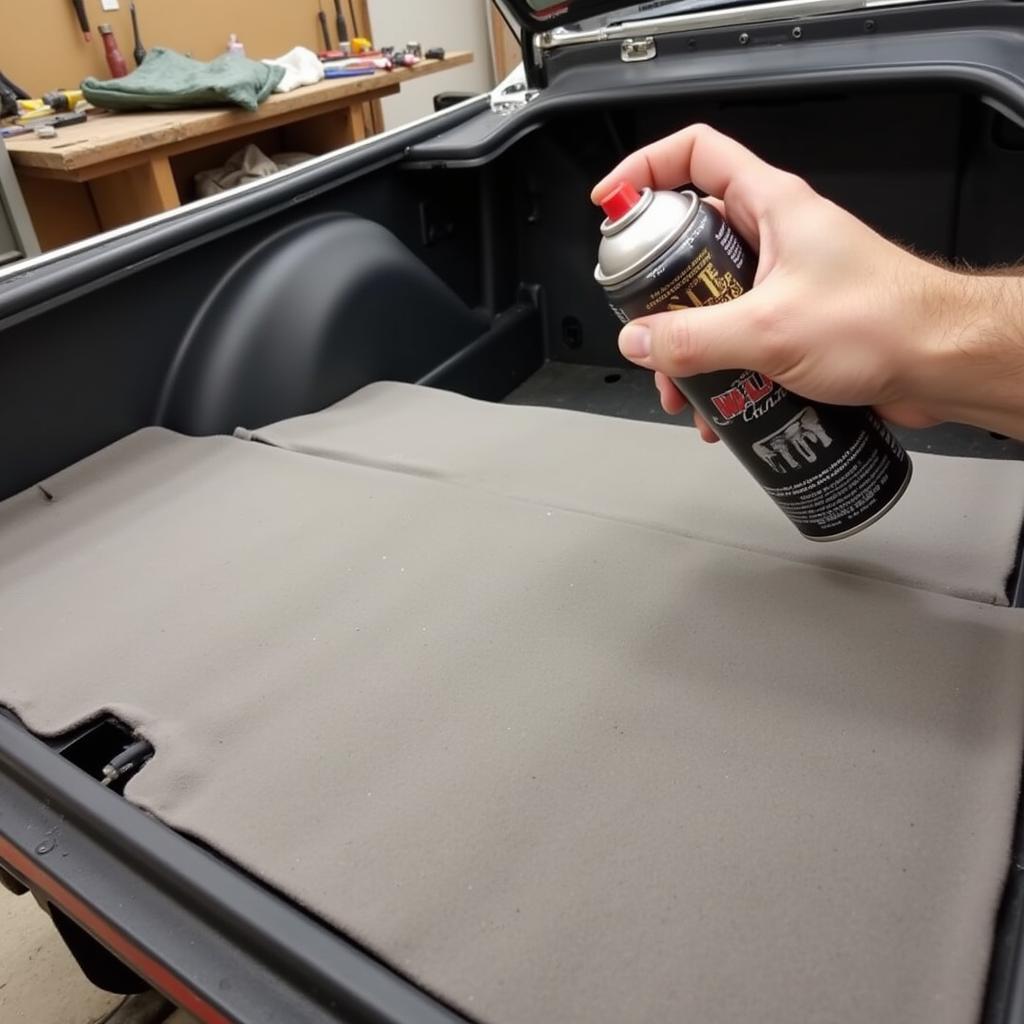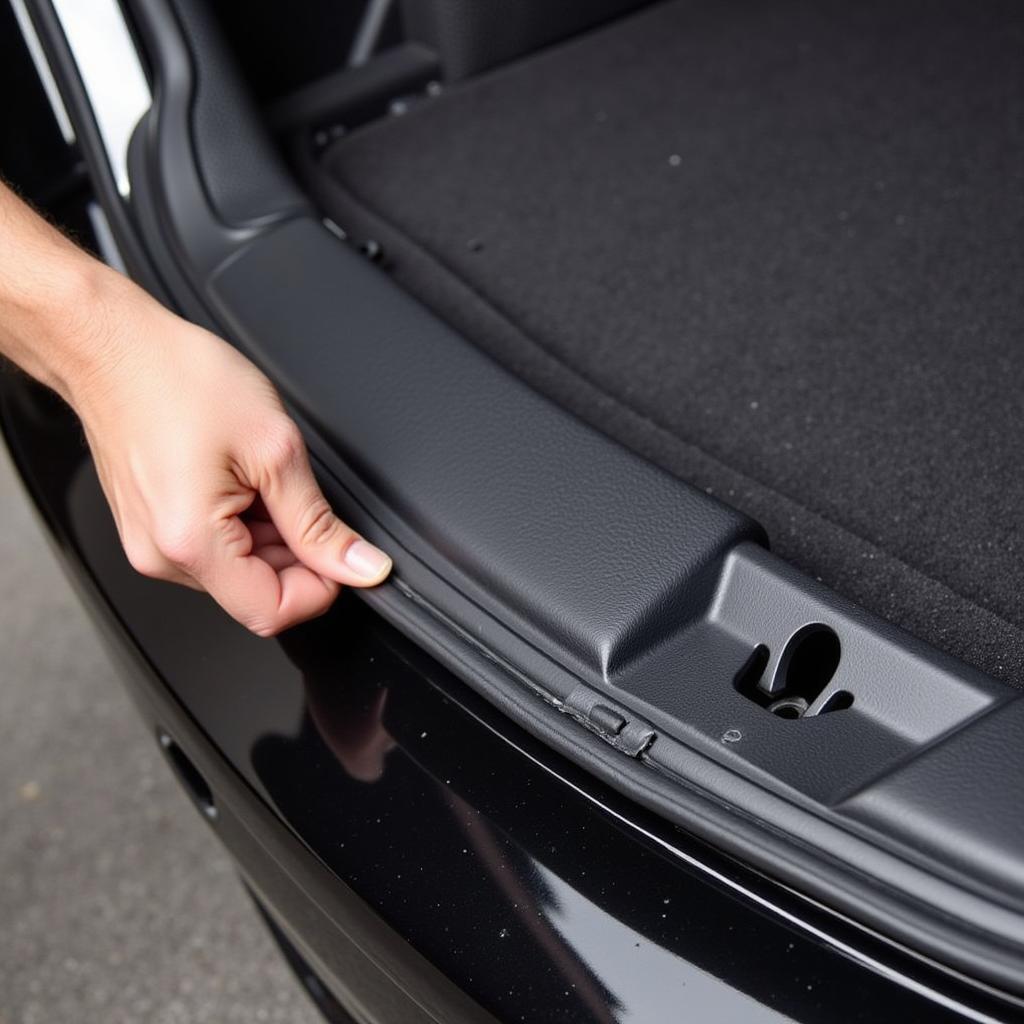Using thinner oil than recommended in your car can lead to a host of problems, impacting performance, longevity, and even safety. This article dives into the potential consequences of using thinner oil, helping you understand the risks and how to avoid them. Let’s explore why using the correct oil viscosity is crucial for your vehicle’s health.
Choosing the right motor oil can feel like navigating a minefield of numbers and letters. While using heavier oil than recommended can cause its own set of issues, using thinner oil presents a unique set of risks you need to be aware of. Problems With Putting Thinner Oil In Car can range from reduced engine protection to catastrophic failure. Don’t risk your engine’s health; understand the implications before you pour. For more information on using heavier oils, see our article on problems with putting heavier oil in car.
Understanding Oil Viscosity and its Importance
Oil viscosity refers to its resistance to flow. Thinner oils have lower viscosity, flowing more easily, especially at lower temperatures. Thicker oils have higher viscosity, providing a more robust lubricating film. Your car’s manufacturer specifies the ideal oil viscosity for your engine based on factors like design tolerances, operating temperatures, and expected driving conditions.
Why is Choosing the Right Oil Viscosity Crucial?
The right oil viscosity ensures adequate lubrication and protection across a range of temperatures. It maintains the necessary oil pressure and prevents excessive wear and tear on engine components. Using the wrong viscosity can compromise these critical functions.
Problems With Putting Thinner Oil in Car: The Potential Consequences
Using thinner oil than recommended can lead to a cascade of problems, potentially resulting in costly repairs or even engine replacement.
What Happens When You Use Thinner Oil?
Thinner oil struggles to maintain adequate pressure, particularly at higher temperatures. This can lead to insufficient lubrication, increased friction, and accelerated wear on critical engine components. The thinner oil film can also break down more easily, leading to increased oil consumption and the formation of harmful deposits.
- Increased Engine Wear: The thinner oil film may not be thick enough to properly separate moving parts, leading to increased friction and accelerated wear.
- Lower Oil Pressure: Thinner oil flows more easily, resulting in lower oil pressure, which can be particularly problematic at high speeds or under heavy loads.
- Increased Oil Consumption: Thinner oil is more prone to evaporation and can leak past seals more easily, leading to higher oil consumption.
- Engine Overheating: Insufficient lubrication can cause excessive friction and heat buildup, potentially leading to engine overheating.
Long-Term Effects of Using Thinner Oil
The long-term consequences of using the wrong oil viscosity can be severe, ultimately shortening the lifespan of your engine. Continuously running your car with thinner oil can lead to:
- Bearing Failure: Insufficient lubrication can cause premature wear on engine bearings, leading to catastrophic engine failure.
- Cylinder Wall Scoring: The thin oil film may not adequately protect the cylinder walls, leading to scoring and reduced engine performance.
- Increased Emissions: Excessive oil consumption can lead to increased emissions and potentially damage your catalytic converter.
“Using the correct oil viscosity is like choosing the right shoes for a marathon. The wrong fit can lead to blisters and pain, while the right fit allows you to go the distance,” says automotive engineer, David Miller, from the Automotive Research Institute. Don’t underestimate the importance of choosing the right oil for your car’s engine.
How to Choose the Right Oil for Your Car
Choosing the right oil is crucial for your engine’s health and longevity. Consult your owner’s manual for the manufacturer’s recommended oil viscosity. This information is typically expressed in a format like 5W-30 or 10W-40.
What Do the Numbers on Oil Bottles Mean?
The numbers on oil bottles represent the oil’s viscosity at different temperatures. The “W” stands for winter, and the number preceding it indicates the oil’s viscosity at low temperatures. The lower the number, the better the oil’s cold-start performance. The number following the “W” indicates the oil’s viscosity at high temperatures.
“Think of your engine oil as the lifeblood of your car. Using the wrong type is like giving it the wrong blood type – it simply won’t work efficiently,” adds Dr. Sarah Chen, a tribologist specializing in engine lubrication.
Conclusion
Problems with putting thinner oil in car can range from minor inconveniences like increased oil consumption to major issues like engine failure. Always refer to your owner’s manual for the correct oil viscosity and don’t hesitate to contact a qualified mechanic if you have any questions. For expert advice and assistance, contact AutoTipPro at +1 (641) 206-8880 or visit our office at 500 N St Mary’s St, San Antonio, TX 78205, United States. Don’t compromise your engine’s health; choose the right oil and keep it running smoothly. problems with putting heavier oil in car.







Leave a Reply